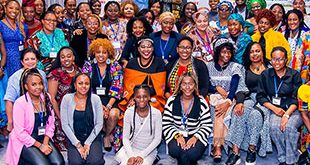
Yangon, Myanmar | AFP | A military campaign to wipe out Rohingya insurgents has rained violence down on Myanmar’s Rakhine state, sending nearly 390,000 Muslim Rohingya refugees fleeing for sanctuary in Bangladesh.
Around 30,000 Rakhine Buddhists and Hindus have also been displaced, as ethnic and religious hatreds carve through the state.
Access to the epicentre of unrest — the northern wedge of Rakhine — has been blocked by the government as the crisis unfolds.
But the weary and wounded Rohingya arriving in Bangladesh have told consistent but unverifiable accounts of village massacres, with soldiers and vigilante mobs teaming up to empty out communities and burn them to the ground.
The UN has accused Myanmar of waging an ethnic cleansing campaign against the Rohingya, a stateless group that the Buddhist-majority country refuses to recognise as citizens.
The government refutes the accusations, instead saying the army has carried out targeted operations to snuff out the militant group, whose attacks on police posts in late August unleashed the massive military response.
Here is what we know about who is left in violence-ravaged Rakhine, where tens of thousands of people are believed to still be on the move.
– Empty villages –
A 2012 count said three million people lived in Rakhine, including an estimated 1.1 million Rohingya.
Rakhine’s northernmost Maungdaw district was home to around three quarters of that population, according to government figures.
But nearly forty percent of its Rohingya villages have been completely abandoned in the past three weeks, said government spokesman Zaw Htay.
“There are 176 villages where the whole village fled,” he told reporters Wednesday night, out of 471 Rohingya communities in total.
The recent refugee arrivals in Bangladesh amount to more than a third of the total number of Rohinyga once based in Myanmar.
The ethnic Rakhine Buddhists and Hindus also driven from their homes by the violence say they were targeted by the Rohingya militants.
Zaw Htay urged internally displaced people to take refuge in temporary camps set up in Rakhine.
But he said the country would not allow all of those who crossed into Bangladesh to return, comments that will fuel allegations Myanmar is intentionally ejecting the Rohingya, whose presence in Myanmar has incensed powerful Buddhist nationalists for years.
“Some reached the other side of border. If they come back, we cannot accept all of them,” Zaw Htay said, adding that returnees would need to be “scrutinised”.
– Raging fires –
Myanmar’s Information Committee has said over 7,000 homes have been destroyed by fire across at least 59 villages — the vast majority belonging to “Bengalis” as the government pejoratively calls the Rohingya.
New satellite images released by Amnesty International on Friday showed that more than two dozen villages snaking down the coast of northern Rakhine had been set alight since August 25.
AFP reporters on government-steered press trips have seen abandoned villages and homes reduced to ashes.
Columns of smoke from the gutted villages have been visible from across the Naf river in Bangladesh, where the Rohingya refugees are massing in ramshackle camps.
Rohingya refugees say Myanmar officers and Buddhist vigilantes set the fires after driving them out of their homes with gunshots and other threats.
Myanmar authorities deny that, saying the militants have torched the villages in a bid to attract global sympathy.
– People on the move –
Tens of thousands of Rohingya are believed to still be trekking through the monsoon-soaked area.
For those fleeing fire-hit areas further south, it may take weeks to cross over difficult terrain, blanketed by security forces, to reach the Bangladesh border.
Aid groups have been unable to access northern Rakhine since the violence erupted in late August, compounding the humanitarian crisis.
“Thousands, perhaps tens of thousands, may be trapped in remote areas far from the border with limited food and medical supplies and are unable to reach safety,” said Pierre Peron, a spokesman for the UN Office for the Coordination of Humanitarian Affairs.
Rohingya who have stayed in their villages are living in fear and struggling to survive without the food deliveries that have supported their impoverished communities for years, said Laura Haigh from Amnesty International.
“They are essentially locked in and markets are not functioning,” she told AFP.
Myanmar has said it will establish camps in Rohingya-majority areas of Maungdaw to provide relief, but details of the project are scant.
On Thursday the Information Committee said shelters will be set up for Muslims “who can guarantee they are no way connected to the terrorists.”
RELATED VIDEO:
 The Independent Uganda: You get the Truth we Pay the Price
The Independent Uganda: You get the Truth we Pay the Price



